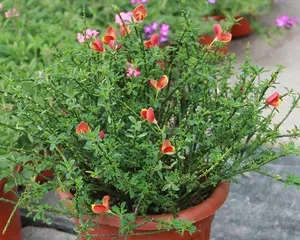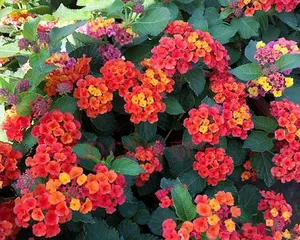Flowers bloom in a riot of color through the changing seasons. Among them, perennial woody flowers are favored by gardening enthusiasts for their rich varieties and easy cultivation. However, their care requires certain techniques, time, and effort. This article will take you on a deep dive into the planting and care of perennial woody flowers, providing an essential guide to creating a beautiful garden.

I. Choosing a Suitable Location
Selecting a suitable location is the first step in planting perennial woody flowers. Choose a place with ample sunlight, good drainage, and fertile soil. Avoid overly dry or wet land, as well as areas with severe pollution such as roadsides or industrial zones.
II. Proper Fertilization
Perennial woody flowers require a large amount of nutrients for growth, so timely fertilization is crucial. It is best to use organic fertilizer, applying it once in the spring and once in the fall. In the summer, add appropriate amounts of phosphorus and potassium fertilizers to promote flower growth.

III. Proper Pruning
After a year of growth, the branches of perennial woody flowers can become long and require pruning and trimming. This is generally done in the spring and autumn. Be sure to remove dead branches, diseased leaves, and pests to promote healthy growth of the flowers.
IV. Appropriate Watering
When watering perennial woody flowers, pay attention to the amount and timing. Water once in the morning and once in the evening. Water more frequently during the plant's growth period, but be careful to avoid waterlogging, which can cause root rot.
V. Maintain Good Ventilation
Good ventilation is an important condition for the growth of perennial woody flowers. Choose a planting location with good air circulation and partial shade to avoid pests and diseases on the plants.

VI. Pest and Disease Control
Perennial woody flowers are susceptible to pests and diseases such as aphids, fungus gnats, and spiders. Effective control measures must be taken promptly. Chemical methods such as insecticides and fungicides can be used, or organic methods like spraying insect repellent made from garlic, lime water, or chili water on the plants.
VII. Regularly Loosen the Soil
The roots of perennial woody flowers need well-aerated soil, so it is necessary to loosen the soil regularly. This is usually done in the spring and autumn, being careful not to damage the roots.
VIII. Prevent Over-fertilization
Although perennial woody flowers need nutrients, over-fertilization can also have adverse effects on the plants. Be sure to master the correct amount when fertilizing to avoid root rot and smaller flowers caused by excessive fertilization.
IX. Timely Transplanting
Perennial woody flowers generally need to be transplanted every three years or so. When transplanting, pay attention to maintaining the integrity of the plant and avoiding root damage. At the same time, choose a suitable pot and soil for the transplant.
X. Reasonably Control Flowering Time
The flowering time of perennial woody flowers can be controlled by managing sunlight hours and temperature. In spring and autumn, use shade nets or other measures to control sunlight hours to promote flower growth and blooming. In summer, control the flowering period by increasing humidity and lowering temperature to prevent it from ending prematurely due to high temperatures.
XI. Timely Pruning of Flower Branches
The flower branches of perennial woody flowers grow rapidly and require timely pruning. When pruning, pay attention to keeping them neat and beautiful, and avoid cutting healthy branches.
XII. Master the Appropriate Planting Time
Perennial woody flowers are generally planted in the spring and autumn. When purchasing plants, pay attention to their quality and health, and select plants that are growing well for planting.
XIII. Control the Amount of Irrigation
The amount of irrigation for perennial woody flowers must be well-controlled, avoiding too much or too little. Generally, each irrigation should keep the soil moist, but not waterlogged, to prevent root rot.
XIV. Timely Weeding
Weeds often grow in the planting area of perennial woody flowers and need to be removed promptly. This not only beautifies the environment but also prevents weeds from competing for water and nutrients.
XV. Pay Attention to Observing Plant Health
The health of perennial woody flowers is our main concern. Pay attention to observing leaves, flowers, and roots. If any abnormalities are found, take timely measures to ensure the healthy growth of the plants.
Perennial woody flowers are an important type of flower for beautifying the environment and improving the quality of life. Correct planting and care methods can ensure they grow well and bloom profusely. As we accumulate experience in practice, we must also continue to learn new knowledge to contribute our own strength to creating a beautiful garden.